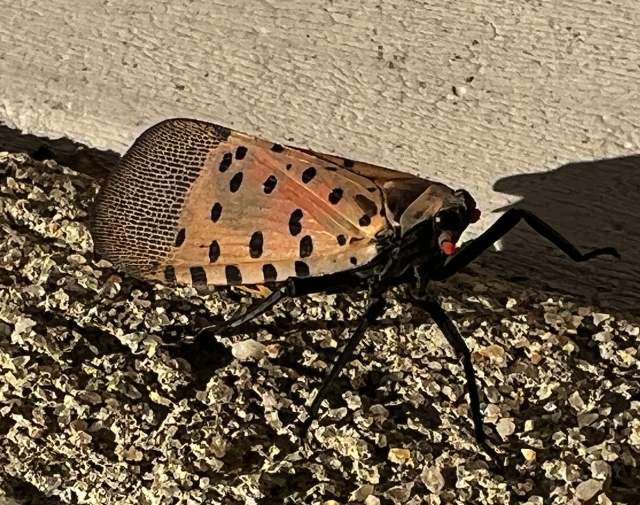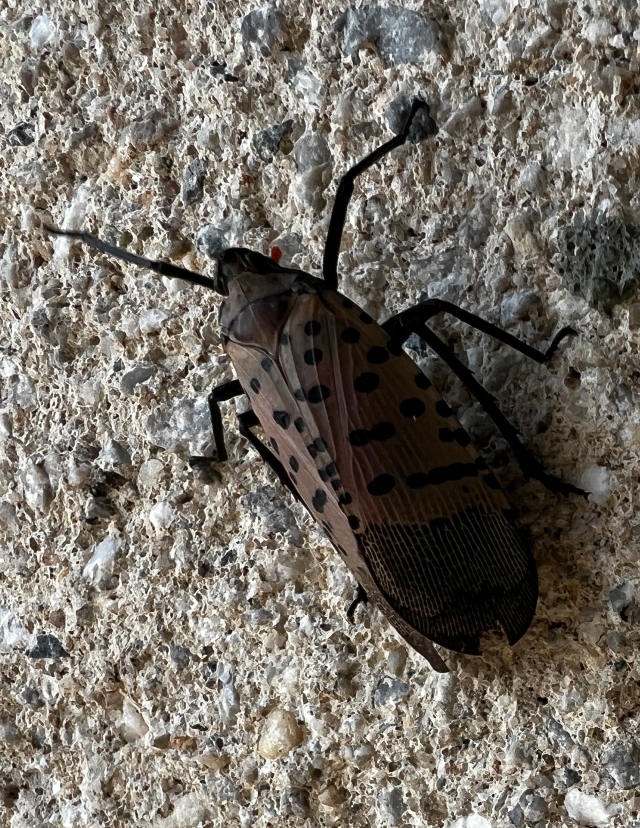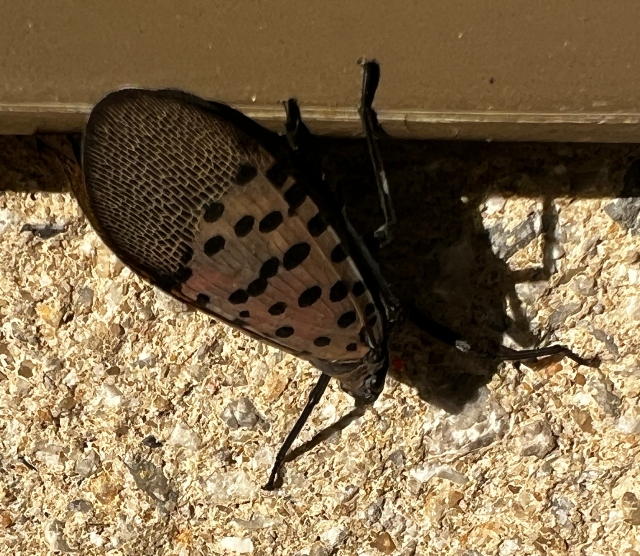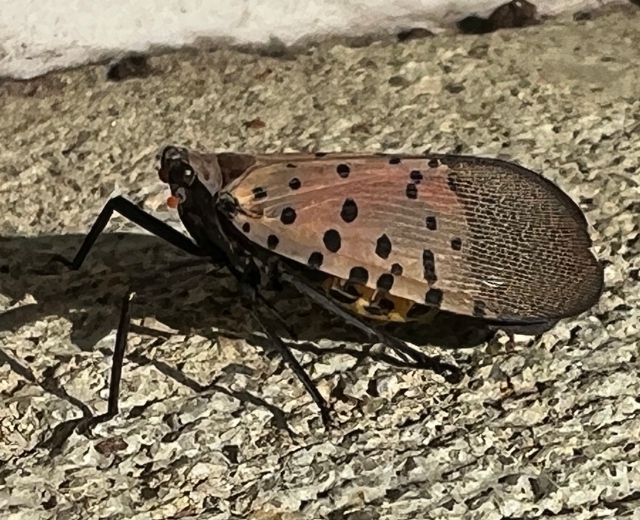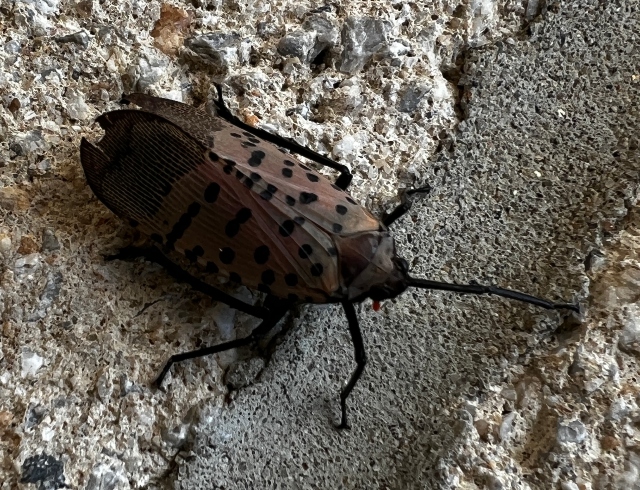While visiting Bronxville, New York, I noticed several insects on the wall outside a sports outfitter store. The Spotted lanternfly is an invasive insect insect from Asia that primarily feeds on Trees of Heaven (Alianthus altissima) but can also eat a wide variety of plants, such as grapevine, hops, maple, walnut, and fruit trees.
The Spotted Lanternfly belongs to a family known as planthoppers – this name comes from their remarkable resemblance to leaves and other plants of their environment and that they often “hop” for quick transportation in a similar way to that of grasshoppers. However, planthoppers generally walk very slowly.
Like other True Bugs, planthoppers begin life as an egg and then, growing, undergo a number of immature stages (nymphs) before a final molt renders them a winged, sexually mature adult.
Adults begin to appear in July and are approximately 1 inch long and ½ inch wide at rest, with eye-catching wings. Their forewings are grayish with black spots. The lower portions of their hindwings are red with black spots and the upper portions are dark with a white stripe. They are laterally flattened and hold their broad wings vertically, in a tent-like fashion, concealing the sides of the body and part of the legs.
The Spotted Lanternfly is indigenous to parts of China and Vietnam. In addition to the United States, it has also spread invasively to Japan and South Korea. Planthoppers use their wings to assist these jumps rather than to make sustained flights. On September 29, 2014, the Pennsylvania Department of Agriculture and the Pennsylvania Game Commission first confirmed the presence of the Spotted Lanternfly in Berks County, Pennsylvania, northwest of Philadelphia.
Although it is an attractive-looking insect, a large potential range exists for the Spotted Lanternfly to become established in almost all of the eastern part of the United States, as well as critical wine- and hop-growing valleys of the Pacific coastal states.


